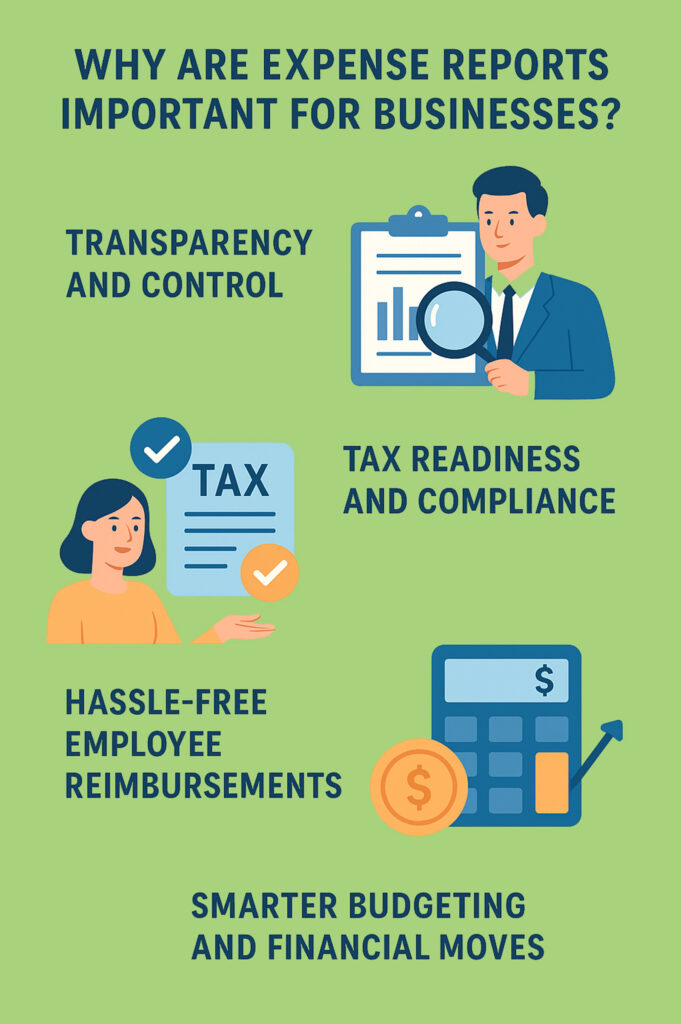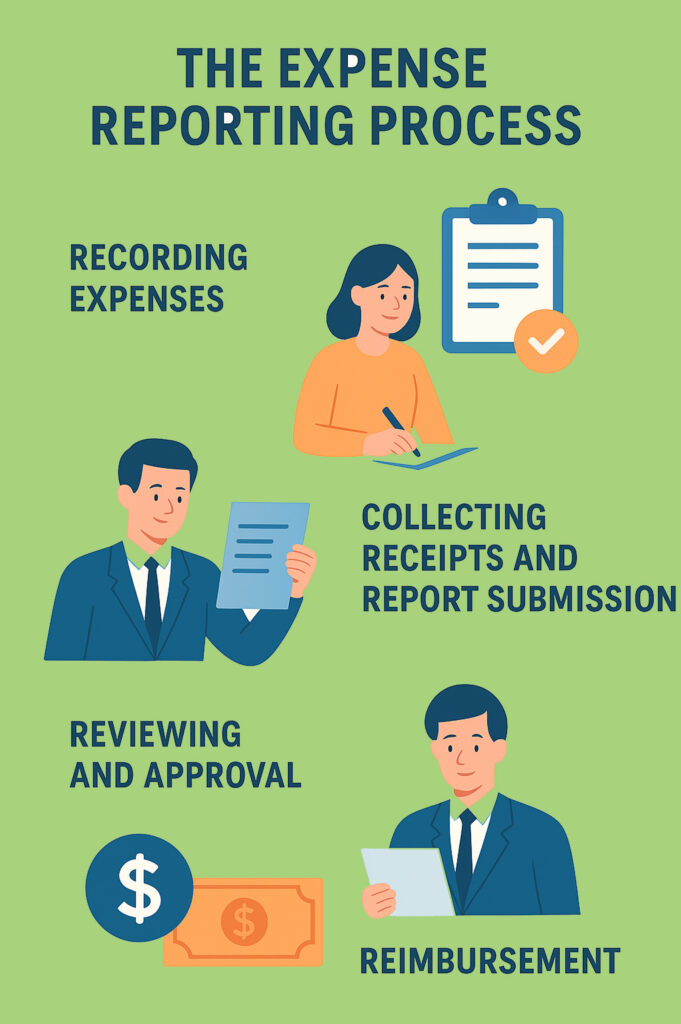Ever thought, What is an expense report, and why do businesses worldwide take it so seriously? That’s because it is more than just paperwork for formality; rather, it is a company’s financial roadmap. An expense report or expense statement tracks the budget spent on business-related needs, be it a business trip, office expansion or anything else. When done right, reporting expenses drives countless advantages, including 100% accuracy in finances, full transparency, a lesser workload load and helps prevent overspending. With a company expense report, businesses know exactly where their money goes.
Along that, the key benefit of expenses reporting is, it helps you stay tax ready. With an error-free company expense report, you will have a reliable paper trail to claim deductions and sail through audits smoothly. Whether you use a sample expense report template or a fully customised employee expense report, the outcome stays the same.
This blog will reveal everything you need to know about expense reports, why they are important and how you can prepare one.
What Is An Expense Report?
An expense report is a manual or digital document that helps companies and employees record money spent for business purposes. Usually, it includes office supplies, meals, client meetings, travel and more. You can consider them as an expense statement that explains where a company’s fund was spent.
For companies, it becomes an expense report that presents spending trends and ensures every expense is compliant with policy. Meanwhile, for employees, it works as a record to claim reimbursements.
Many companies use a manual sample expense report template to make the process quicker and consistent. However, manual reporting has a fair share of demerits, if compared with automated tracking. With automated expense reporting, every expense is reported at the speed of light so that finances stay on track. Also, software like ExpenseVisor helps a business keep track of its expenses so that at the time of taxation, it can present the required data easily.
Why are Expense Reports Important for Businesses?
Money management is the backbone of every company, and an expense report for business is the key to keeping finances in check. As mentioned earlier, it is far from being ‘just paperwork’. Instead, it is a structured way to ensure accuracy in finances and enjoy tax-readiness in everyday spending.
Here are a few reasons why businesses can not do it without an employee expense report:

Transparency and Control
With a company expense report, the higher management can track every rupee or dollar spent. And with such transparent tracking, it becomes easier to:
- Identify overspending before it snowballs
- Prevent duplicate or potentially fake claims
- Keep employees accountable for business costs
This level of visibility protects the business from fraud and ensures every penny is spent wisely.
Tax Readiness and Compliance
One of the biggest benefits of expense reporting is, it helps a business stay audit-ready. A structured expense statement ensures a reliable paper trail for deductions, stress-free handling and peace of mind knowing everything is compliant. Since the tax process occurs once in a while, it can be challenging to keep receipts organised. But with expense reports, everything is organised digitally, so the data can be accessed with a click, ensuring swift procedures. Specifically, if you have software like ExpenseVisor at your side, your business will stay fully organised and tax ready.
Hassle-Free Employee Reimbursements
Waiting weeks to get reimbursed and chasing payments is the last thing any employee would want for themselves. A standard employee expense report speeds up approvals, keeps things fair and gets employees reimbursed quickly and fairly. You may either opt for a simple expense report template or trust reliable software like ExpenseVisor for a company expense report.
Smarter Budgeting and Financial Moves
With an expense report, leaders gain deeper insights about spending patterns. This helps them understand where they should – or shouldn’t be spending money. Using a report, they can identify rising costs, unused subscriptions or other expenses that might be gulping away the budget. Also, they can reallocate funds where they’re needed most, cut down on unnecessary expenses and make data-driven financial decisions. The result? They’re able to budget smartly and make strong financial moves.
The Expense Reporting Process
So, we’ve discussed why businesses need expense reports. Now, let’s look at how they actually work. The expense reporting process may look complicated, but when broken down into steps, it is the most straightforward process for management.
The usual drill looks like:

Recording Expenses
The first step is to track and record expenses. This includes every single expense like travel, meals or buying basic office supplies like staplers. This step can either be done manually or through an expense report template. Usually, companies provide a simple expense report template to make logging expenses quick and consistent. You can rely on software like ExpenseVisor that will ease this step for you.
Collecting Receipts and Report Submission
Next comes collecting receipts. Employees are required to present receipts while claiming reimbursements so finance teams and managers can verify claims. Receipts can be paper or digital. For paper receipts, employees would be required to submit them manually to the respective department. Meanwhile, digital receipts can be submitted online with a single tap. You just click, the system scans and the receipt gets uploaded instantly.
Reviewing and Approval
Once the report is submitted or uploaded, managers and finance teams pull up their sleeves and verify the report. A company expense report ensures that only valid expenses are claimed and reimbursed. In the case of manual reports, the process might be time-consuming since finance teams will be checking every claim one by one. On the other hand, with digital reporting, approvals are given within moments. That’s because tools or software are trained with spending policies, and they automatically approve or reject the claim.
Reimbursement
Finally, approved expenses are reimbursed to employees.
Why Should You Switch to an Expense Report Software Like ExpenseVisor?
Do you want to transform your expense reporting experience? Switching to an automated expense reporting system can be your best call! However, while choosing software, you need to ensure that you pick the best available option. And as per the reviews, ExpenseVisor is trusted and recommended by businesses around the globe. We’ve covered a detailed blog, Why Your Business Needs a Receipt Tracking App Like ExpenseVisor for your further help.
Here is why switching to ExpenseVisor will prove to be the best call:
Modern Features
ExpenseVisor is an upgraded software that has features like DocScan and automated categorisation. With DocScan, you can snap a photo of receipts and upload them within seconds. This means – no more lost or damaged receipts. Using automated categorisation and syncing, every report is generated in real-time, which allows you to achieve less lag between spending and reporting.
100% Accuracy
This software has built-in checks against company policies that can enforce rules and identify duplicate or unusual claims. Also, with this smart software, audit trails are automatic, so that every expense is logged and receipts are attached, helping a business stay expense-ready. You may also check out our blog, Boost Accuracy with Financial Reporting Tools by ExpenseVisor, to know more about how this software can help you achieve accuracy.
Less Fuss, Happier Employees
Simple expense report template in ExpenseVisor takes the hassle out of the picture. This helps a company improve employee-business relationships and keep its staff satisfied. Also, employees can submit their reports from any part of the world, adding more reasons for satisfaction.
Better Visibility and Control
ExpenseVisor has a real-time dashboard that shows spend analytics, reporting tools, travel expense tracking and much more. This allows leaders to see where their money is going. Also, this software has a pre-approval workflow and spend limits that allow you to control expenses before they happen.
What Information Does ExpenseVisor Require for an Expense Report?
To ensure your expense reporting process is streamlined, ExpenseVisor collects several key data points. Here’s what it requires you to share:
- Expense categories like travel, meals, entertainment, supplies, office expenses, and other miscellaneous expenses, as defined by your company’s policy
- Receipt and proof of purchase. It could be a digital receipt that can be uploaded via the DocScan feature, or for cash transactions, you may attach scanned photos
- Expense dates, like the date the expense was incurred and the date the expense is being reported
- The full expense amount and the currency, especially if it was an international expense
- Project or client information, if the expense is related to a project
- The manager is responsible for approving the expense
Wrapping Up
In this blog, we shared what an expense report is, why it is so important, and why turning to ExpenseVisor can be the best shot. We further explored how an employee expense report improves reimbursements and how an expense statement keeps you tax-ready.
Instead of wrestling against spreadsheets, you can manage expense reports in one place with ExpenseVisor. It makes reporting expenses effortless and features like receipt scanning, automated compliance checks, and real time dashboards. The result is accuracy, transparency, and faster decisions, all while keeping your business audit ready.
If you want to simplify your workflow, empower your team, and take the stress out of financial management, try ExpenseVisor today. It is more than software, it is your partner in smarter expenses reporting.



